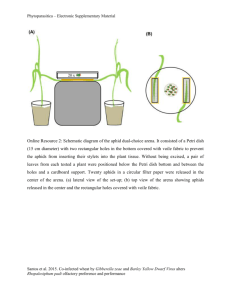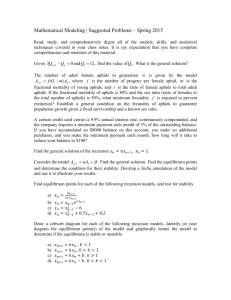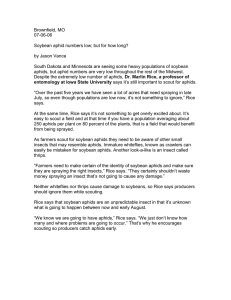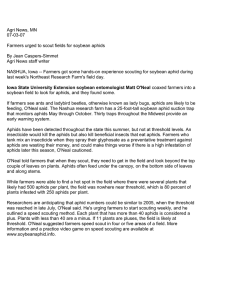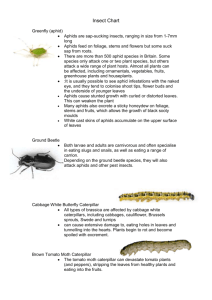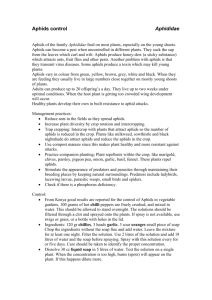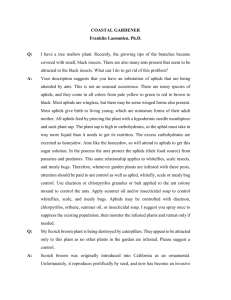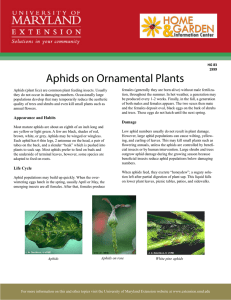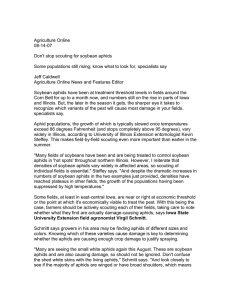- جامعة كفر الشيخ
advertisement
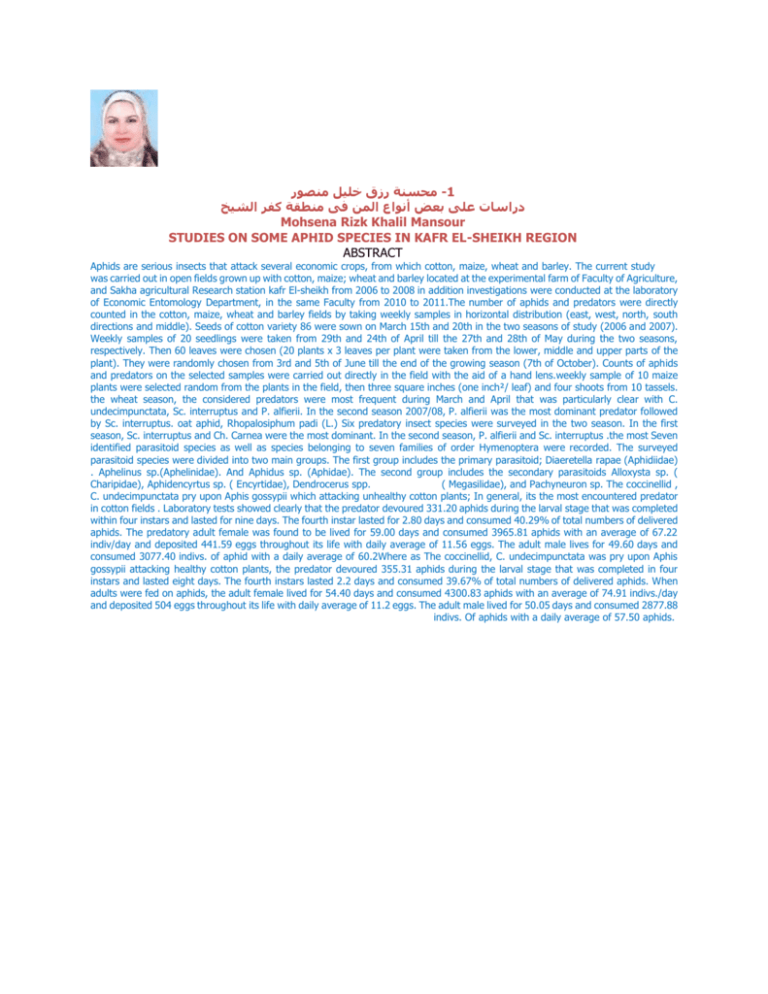
محسنة رزق خليل منصور-1 دراسات على بعض أنواع المن فى منطقة كفر الشيخ Mohsena Rizk Khalil Mansour STUDIES ON SOME APHID SPECIES IN KAFR EL-SHEIKH REGION ABSTRACT Aphids are serious insects that attack several economic crops, from which cotton, maize, wheat and barley. The current study was carried out in open fields grown up with cotton, maize; wheat and barley located at the experimental farm of Faculty of Agriculture, and Sakha agricultural Research station kafr El-sheikh from 2006 to 2008 in addition investigations were conducted at the laboratory of Economic Entomology Department, in the same Faculty from 2010 to 2011.The number of aphids and predators were directly counted in the cotton, maize, wheat and barley fields by taking weekly samples in horizontal distribution (east, west, north, south directions and middle). Seeds of cotton variety 86 were sown on March 15th and 20th in the two seasons of study (2006 and 2007). Weekly samples of 20 seedlings were taken from 29th and 24th of April till the 27th and 28th of May during the two seasons, respectively. Then 60 leaves were chosen (20 plants x 3 leaves per plant were taken from the lower, middle and upper parts of the plant). They were randomly chosen from 3rd and 5th of June till the end of the growing season (7th of October). Counts of aphids and predators on the selected samples were carried out directly in the field with the aid of a hand lens.weekly sample of 10 maize plants were selected random from the plants in the field, then three square inches (one inch²/ leaf) and four shoots from 10 tassels. the wheat season, the considered predators were most frequent during March and April that was particularly clear with C. undecimpunctata, Sc. interruptus and P. alfierii. In the second season 2007/08, P. alfierii was the most dominant predator followed by Sc. interruptus. oat aphid, Rhopalosiphum padi (L.) Six predatory insect species were surveyed in the two season. In the first season, Sc. interruptus and Ch. Carnea were the most dominant. In the second season, P. alfierii and Sc. interruptus .the most Seven identified parasitoid species as well as species belonging to seven families of order Hymenoptera were recorded. The surveyed parasitoid species were divided into two main groups. The first group includes the primary parasitoid; Diaeretella rapae (Aphidiidae) . Aphelinus sp.(Aphelinidae). And Aphidus sp. (Aphidae). The second group includes the secondary parasitoids Alloxysta sp. ( Charipidae), Aphidencyrtus sp. ( Encyrtidae), Dendrocerus spp. ( Megasilidae), and Pachyneuron sp. The coccinellid , C. undecimpunctata pry upon Aphis gossypii which attacking unhealthy cotton plants; In general, its the most encountered predator in cotton fields . Laboratory tests showed clearly that the predator devoured 331.20 aphids during the larval stage that was completed within four instars and lasted for nine days. The fourth instar lasted for 2.80 days and consumed 40.29% of total numbers of delivered aphids. The predatory adult female was found to be lived for 59.00 days and consumed 3965.81 aphids with an average of 67.22 indiv/day and deposited 441.59 eggs throughout its life with daily average of 11.56 eggs. The adult male lives for 49.60 days and consumed 3077.40 indivs. of aphid with a daily average of 60.2Where as The coccinellid, C. undecimpunctata was pry upon Aphis gossypii attacking healthy cotton plants, the predator devoured 355.31 aphids during the larval stage that was completed in four instars and lasted eight days. The fourth instars lasted 2.2 days and consumed 39.67% of total numbers of delivered aphids. When adults were fed on aphids, the adult female lived for 54.40 days and consumed 4300.83 aphids with an average of 74.91 indivs./day and deposited 504 eggs throughout its life with daily average of 11.2 eggs. The adult male lived for 50.05 days and consumed 2877.88 indivs. Of aphids with a daily average of 57.50 aphids.
